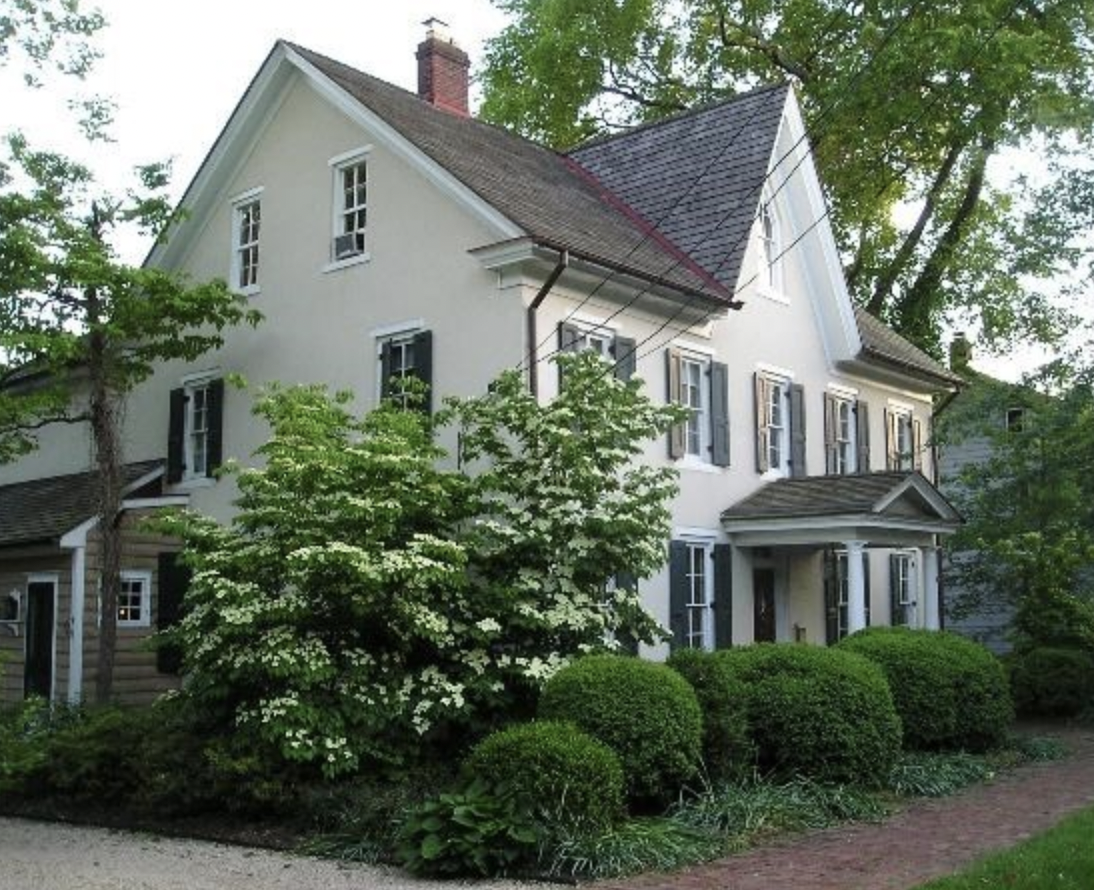140 East Main Street, Moorestown
The house at 140 East Main Street is a contributing property in the Moorestown Historic District listed on the National and New Jersey State Historic Registers.
140 East Main Street, present day
The oldest portion of this house was built c. 1783, during the waning days of the American Revolution by Richard Edwards. He was a prominent local citizen who served in 1782 on the township committee and was also an overseer of highways.
The 1796 Burlington County Tax Ratables record shows him owning a house, 13 acres of land, 2 horses over 2 years old and 2 cattle over 3 years old. He also had a property in Lumberton, where he was a prosperous merchant and had a thriving liquor business in Philadelphia.
Moorestown nearly lost this beautiful historic home to severe neglect in the late 1990s. It has been completely and faithfully restored and updated by the current owners. The rear portion of the house is the original, oldest part of the home. It stood as a small, two-story house. The back room which has been remodeled as a kitchen retains an early wide-beaded-board wall and cupboard stair typical of colonial era houses.
Continue reading for more details…
The house was substantially enlarged and “modernized” around 1860 with a brick addition on the front with Victorian gables. The division of the two periods is evident by the change of ceiling heights, windows and woodwork as you moved from the front rooms to the rear. The present main stair was part of the 1860 remodeling and still retains the banister from that period. A 40-foot brick well was found in the cellar.
To the rear of the home, the current owners constructed a 2-story addition for contemporary family living.
Down the hill, in the backyard, is the mid-19th century Lippincott barn, which was originally located at the Lippincott Farm on Westfield Road (where Care One is located today). Each piece of its post and beam frame was meticulously numbered and disassembled, then trucked to this location and carefully rebuilt by Amish barn framers. The beams are held together with oak pegs. In the 1850’s no nails were used in the assembly of the barn frames. The 6”x6” timbers are primarily hemlock. Amazingly, after 170 years, the frame when reassembled was still perfectly square and plumb! This barn was moved to its current location about 20 years ago and with luck, will still be standing for another 150 years. The Lippincott barn is one of Moorestown’s few remaining barns and was slated for demolition until it was moved in 2002.
The original owner, Richard Edwards, had a daughter, Ann Edwards, who was a much-loved Quaker minister active in the Chester Monthly Meeting in present day Moorestown. Ann was born into a non-Quaker family and later became a convinced Friend, i.e., a convert to Quakerism. The date of her conversion is unknown, though it must have preceded her recognition as a minister in 1808. The Edwards family did not follow her into membership in the Society, with the exception of her sister Elizabeth, who became a member in 1815.
Edwards was particularly active as a minister between 1810 and 1818; during these years she visited Virginia, New York, and Baltimore Yearly Meetings as well as many smaller meetings under their jurisdiction. She was also active in Moorestown, NJ, and the surrounding area. Ann Edwards never married. She died on February 5th, 1820, while trying to cross the frozen Delaware River in a carriage or wagon in the company of Henry Warrington Jr., Nancy Stokes, and Esther Hunt Collins. The ice gave out under the vehicle, and Edwards and Collins were lost beneath the water.
The frozen Delaware River in 1856
Another resident of this home was Clayton Lippincott, who was a respected judge and the first president of the Moorestown National Bank. He wrote an important history of Chester Township in 1883 for Woodward and Hageman’s History of Burlington and Mercer Counties. This history can be found in the book Moorestown Old and New by James Purdy.




